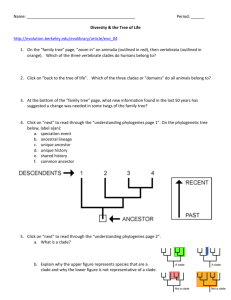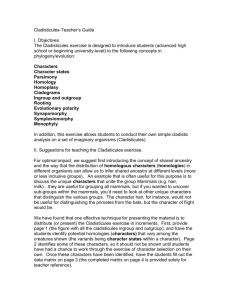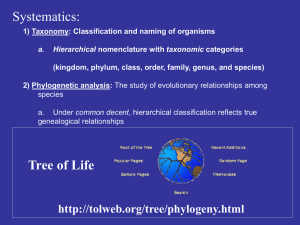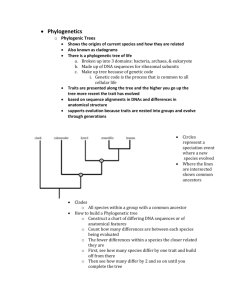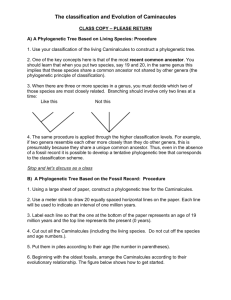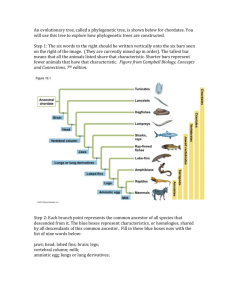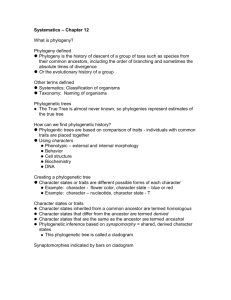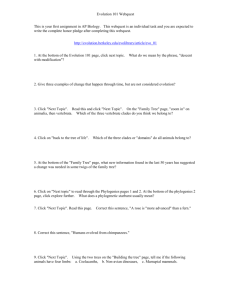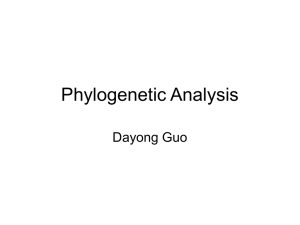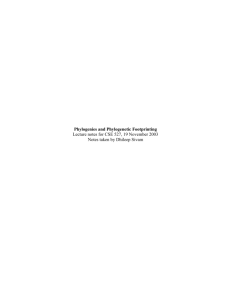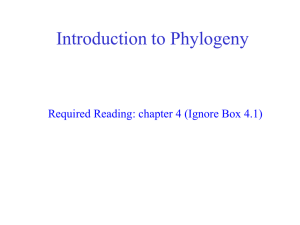CLASSIFICATION
advertisement
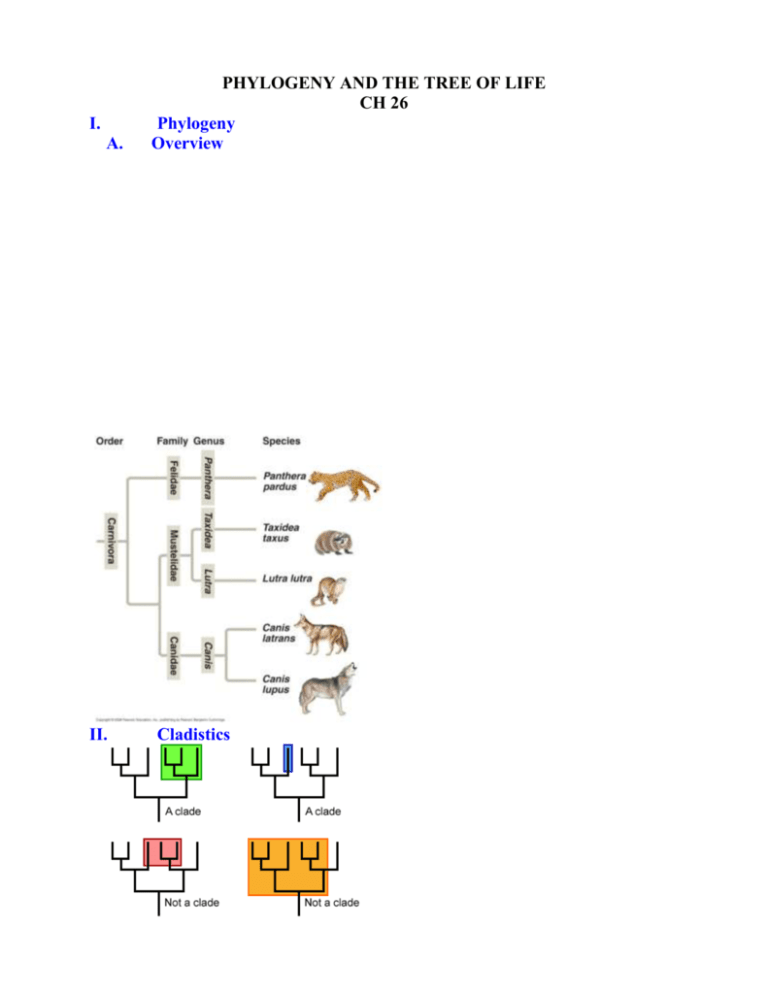
I. A. II. PHYLOGENY AND THE TREE OF LIFE CH 26 Phylogeny Overview Cladistics Which are clades and which are not? Constructing a phylogenetic tree based on homology jaws lungs amniotic fur egg lamprey 0 0 0 0 shark 1 0 0 0 salamander 1 1 0 0 lizard 1 1 1 0 tiger 1 1 1 1 gorilla 1 1 1 1 human 1 1 1 1 binocular vision 0 0 0 0 0 1 1 bipedal 0 0 0 0 0 0 1 The branch points represent the common ancestor The characteristics are derived characteristics Can use physical characteristics for a broad cladogram Can use DNA comparisons for a more narrow cladogram (primate evolution) o The more similar the sequence, the more recent the common ancestor o The more distant the common ancestor, the more time there was for mutations to take place III. Problems reconstructing phylogenies i. Not all similar traits are homologous, the result of divergent evolution (synaptomorphy) Synaptomorphy = a trait that is similar among species because the common ancestor of those species had that trait b. Some traits evolved by convergent evolution = homoplasy http://evolution.berkeley.edu/evolibrary/article/0_0_0/evo_09 3. Then how can we accurately create phylogenetic trees? Must use many traits to construct phylogenetic tree If don’t distinguish between homoplasy and homology you will with wrong conclusions homology is more reliable than homoplasy BUT must be able to distinguish between them 4. Parsimony and constructing phylogenetic trees Parsimony: criteria used to construct phylogenetic trees based on minimizing the number of changes Constructing trees based on parsimony vertebrae bony 4 amniotic hair two post orbital skeleton limbs egg fenestrae sharks y n n n n ray finned y y n n n n fish n primates rodents and rabbits y y y y y y y y y y n crocodiles y y y y n y dinosaurs and birds y y y y n y dinosaurs and birds Crocsodiles Rodents and rabbits primates Crocsodiles amphibians ray finned fish sharks dinosaurs and birds n Rodents and rabbits n primates y amphibians y ray finned fish y sharks amphibians
